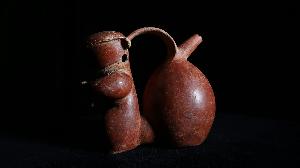Ilama, Yotoco, Sonso, Malagana Cultures
Ilama, Yotoco, Sonso, Malagana Cultures;Calima Culture
- Nghệ sĩ
- Tất cả các tác phẩm nghệ thuật theo thời gian
- Tất cả các tác phẩm nghệ thuật bằng Alphabet
- Tác phẩm nghệ thuật nổi bật
Địa điểm: Valle Del Cauca
Tiểu sử:
The Calima culture is a series of pre-Columbian cultures from the Valle del Cauca in Colombia. The four societies that successively occupied the valley and make up Calima culture are the Ilama, Yotoco, Sonso, and Malagana cultures. The Calima Darién Archaeological Museum and the Calima Gold Museum feature artifacts from the Calima culture. The Ilama culture, the first Agricultural-Pottery society, appeared along the Calima River near the present day towns of Restrepo and Darien around 1500 BCE. Its society had a social structure of Cacicazgos (chiefdoms) that prevailed until the arrival of the Spaniards. The economy of Ilama was based on textile weaving, metallurgy, hunting, fishing, and agriculture. Yuca and beans were primary crops. The Chief or Cacique was the leader of the settlement. Other occupations were shamans, warriors, farmers, hunters, pottery men, and goldsmiths. Their ceramics were typically red and black, featuring religious imagery. By 100 CE, the Yotoco culture emerged, characterized by the use of more colors in ceramics and the representation of cosmogony in objects made of gold. The Sonso culture, which lasted until the Spanish conquest, was characterized by a decrease in the production of ceramics and gold objects.






